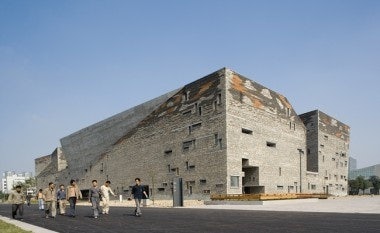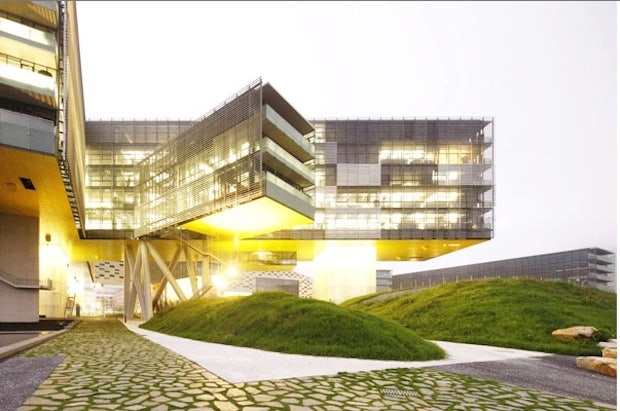Leading A New Generation Of Chinese Designers#

While massive skyscrapers have become the staple aesthetic of urban Chinese skylines, a new breed of home-grown architects like Li Hu believe cities like Beijing need architects with distinct attitudes and vision. A graduate of Beijing's Tsinghua University and Rice University in Houston, Li returned to Beijing after a seven-year jaunt in New York to join Steven Holl Architects in 2000, becoming partner in 2005. Running the firm's Beijing office from 2006-2010, Li is responsible for award-winning designs including the Linked Hybird in Beijing, the Vanke Center in Shenzhen, and the Sifang Art Museum in Nanjing.
Now, Li acts as the director of Studio-X Beijing, a global initiative that provides a space for sharing ideas and serious research, originally launched by Columbia University's Graduate School of Architecture, Planning and Preservation. Since 2009, Li has organized workshops, films and art exhibitions to create a "think-tank" environment designed to engage architectural, urban and cultural issues.
As Li told China Daily this week of the current architectural landscape in China, "Following these days is too easy in Chinese architecture, and everything can be copied." As Li added of his plans to reshape design in China, "I want to cultivate a kind of collective architectural thinking and debate that is urgently needed in China today. I hope to create a nonprofit think-tank to help the government regarding micro and macro architectural issues related to the future of the city."

According to Mark Wigley, Columbia's architecture dean and the mastermind of Studio-X, Li was appointed as director because "he is a leader of a new generation of Chinese designers. He has made Studio-X Beijing a real home for creativity and collegiality." As Wigley added,
China's new generation of architects draws on the best thinking from around the world, but their real strength is that they actively participate in the major transformations going on in China. They are re-inventing what architectural practice can be for a new world. They were our students but now they become our teachers. This is the main point of Studio-X - to listen and learn from a new generation.

Clearly, as anybody who has spent a fair amount of time in China's second- and third-tier cities would attest, home-grown design still has a long way to go. But it is also clear that Chinese architectural design has come a long way since the ubiquitous Soviet-style concrete residences of the 1960s and '70s, and the changing tides of China’s architectural landscape have not gone unnoticed. Earlier this year, 49-year-old boundary-breaker Wang Shu became the first China-based designer to take home the prestigious Pritzker Prize, a landmark step for Chinese architecture.
The changes currently underway in China's design industry have also proven highly attractive to international design firms and designers in recent years, with architect John Puttick telling Jing Daily that he considers the country "one of the most exciting places to be an architect right now.” As Chinese architecture gains such acclaim, we only hope to see more groundbreaking designs to come, creating skylines that they can call their own.
